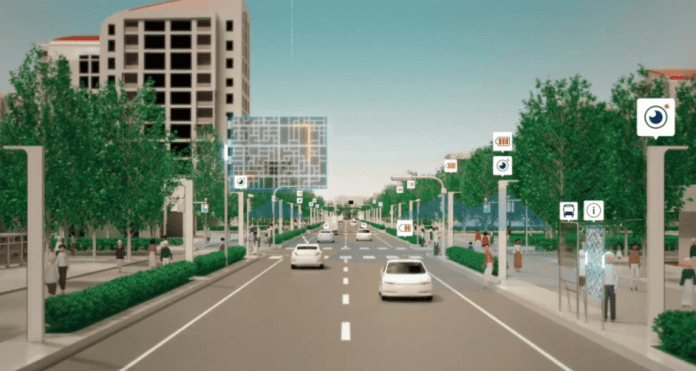NEC Corporation has opened a mobility test centre in Japan to develop autonomous driving technologies and intelligent transportation systems. The setup uses a private 5G network running high-speed video analytics to help vehicles connect with and navigate through traffic and road infrastructure.
The new Mobility Test Center in Gotemba City in central Japan is presented as a ‘co-creation’ space for specialist partners to collaborate with NEC’s portfolio of 5G, IoT, and AI technologies.
The Japanese government’s new strategy – called (wait for it), the Declaration to be the World’s most Advanced Digital Nation and the Basic Plan for Promotion of Public-Private Data Utilization – set an agenda for 5G-enabled road traffic infrastructure.
NEC said “basic specifications and roadmaps” are already being formulated in Japan, in support of this vision. The new mobility centre will be one of the testbeds for the country’s trials of vehicle-to-vehicle (V2V) and vehicle-to-infrastructure (V2I) – collectively called vehicle-to-everything (V2X) – technologies using 5G networks.
The test centre is equipped with 5G-connected traffic lights and pedestrian crossings, 5G-connected edge terminals and C-V2X roadside units, and edge-based IoT cameras and AI processing devices. Connected and autonomous cars and buses, as well as pedestrian equipment like electric wheelchairs will be tested on site.
Subscribe now to get the daily newsletter from RCR Wireless News
The use of a dedicated private 5G network allows greater control over the mobility tests on site. NEC said it will use the network to “acquire and analyse overhead images of intersections with cameras installed on roadside objects”.
It commented: “This function notifies vehicles equipped with 5G stations of pedestrian crossings, collision prediction information, and speeding vehicle information. Dangerous vehicles and people in locations that are often blind spots will also be digitized to… conduct experiments that lead to automatic driving.”
Camera-based analytics will be employed to analyse vehicles and pedestrians, and to recognise license plates. This data will help to track vehicles from outside the region, and changes in traffic volumes through the day. The cameras will also be trained to pick up surface conditions objects in the road in real-time, and issue alerts to vehicles about hazards.
Yuji Onoda, general manager of NEC’s ‘cross-industry’ unit, said: “NEC aims to contribute to the creation of safe, secure, and people-friendly cities by utilizing this NEC Mobility Center as a place for co-creation with partner companies.”

